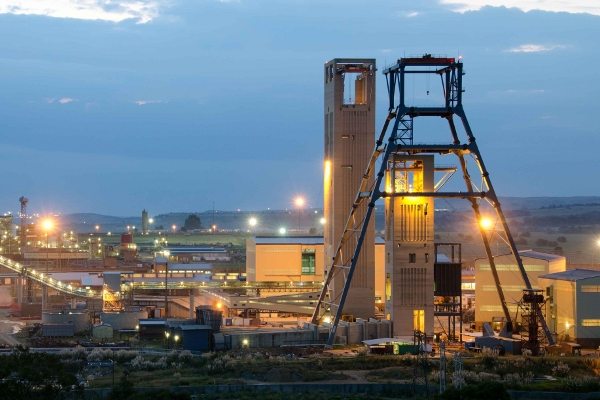
THERE is a story told of how Barrick executives were seen at the 2006 Denver Gold Conference conducting ‘running high fives’ having earlier in the year sold the firm’s stake in South Deep, the West Rand gold mine, to Gold Fields for R22bn in cold cash.
An apocryphal tale delivered in hindsight perhaps, especially given Gold Fields’ 12-year failure to extract anything like the kind of value paid for the asset. Yet there’s no disputing the R22bn, nor the fact that the CFO who presided over the Gold Fields purchase was Nick Holland, incumbent CEO at the South African firm for ten years in April.
Another story which has more basis is the fact that Dave Hogdson, a gold miner for AngloGold Ashanti, as it now is, frequently observed that the three things that mattered most in gold mining was grade, grade and grade.
Grade is something South Deep would appear to lack, or sufficient quality of it. This is why the mine needs bulk, rather than selective mining. Holland and team subsequently decided, a short while after having bought South Deep, that the best way to exploit the five grams/tonne (g/t) grade the mine offered (compared to 8g/t at mines in fairly close proximity) was to mechanise the operation.
Mechanisation clearly works. According to data collected by Platinum Group Metals (PTM), a company that has also encountered its fair share of mine-building difficulties, the mechanisation of Anglo American Platinum’s Mogalakwena mine yields 4E platinum group metal (PGM) ounces per worker per month of some 34 oz. This compares to 2.1 oz per month at Impala Platinum’s Lease Area and 2.8 4E oz per worker per month at Lonmin’s Marikana facilities – the latter two also undergoing massive restructuring of their own.
Clearly bulk mining can result in better productivity.
The challenge at South Deep, however, is trying to convert a mine conventionally mined into a modern, mechanised mine. Whilst analysts say there’s no fundamental problem to the mine plan or infrastructure – which has been built out at some additional R16bn in capital expenditure by Gold Fields – bringing the people along capable of implementing this is proving to be another matter entirely.
Holland said in a press call this week the task was to extract greater levels of productivity and organisation from South Deep’s employees – whilst hastening to add that the failures of South Deep couldn’t be laid solely at the door of the people working in it. But he and Gold Fields would appear to be swimming against the tide.
According to recently published Minerals Council data, unit labour costs in the South African gold industry have increased by 18% between 2006 and 2016 during which time labour productivity has declined by 3%.
Holland expects “volatility” over the next few months whilst the restructuring plans are worked through at South Deep, and probably more cash leakage. The question then is whether he can steer the asset through to some semblance of stability. Analysts aren’t sure Gold Fields knows if this can be achieved.
According to Leon Esterhuizen and Arnold van Graan, analysts at Nedbank CIB, the restructuring reflects a company that has given up on the asset, but doesn’t know what to do with it. Closing the mine will result in a hefty R20bn write-down, its current carrying value whilst selling it involves a similar size of impairment and sees Gold Fields lose millions of ounces in gold price optionality (although whether Gold Fields will ever extract the full 60 million resource ounces seems doubtful at present).
Calling for Holland’s resignation merely transfers the problem of South Deep from one executive to a completely new one. The same decisions have to be made since the route to making South Deep work is wholly down to winning over the hearts and minds of a distracted, probably fractious, group of employees dealt difficult cards as Gold Fields hops from one foot to the other on what to do.
Employees have been shunted between shift patterns, a host of itinerant (Australian) consultants, this and that re-skilling and amid the threat and reality of intermittent job losses and redeployments. Extant employees are now faced with the mother of all ‘right-sizing’, but are expected to keep on trucking.
Without any clear sight of finality over South Deep, the bigger question is whether the mine’s failure is the ominous sounding of the death knell for the entire South African gold industry. “Since 2005, South African gold production has declined by 54% due to a number of reasons including increasing depth of mining, less working time at the face due to greater distances from shaft infrastructure, declining grades, rising costs and stoppages,” observed the Minerals Council in its recent report.
On the same day I wrote of the South Deep restructuring, my eye was turned by another story: the development and commissioning of Fekola, a gold mine in Mali, owned by B2Gold. Fekola’s impact on the company looks dramatic: having cost $521m (R7.6bn) to build, and which came with the A$670m (R7bn) merger of B2Gold with Papillon Resources in 2014, gold production from Fekola will lift B2Gold’s production about 58% in 2018, and generate cash flow over three years of $500m, at an average gold price of $1,275/oz.
The successful commissioning was topped off with a $47m investment by the Mali government, just emerging from a presidential run-off, taking its stake in the project to 20%, the first 10% stake representing a free-carry.
Said JP Morgan Cazenove of the government’s investment: “After investment uncertainties in East Africa, we welcome more predictable out comes from Mali. We feel this is particularly encouraging given the exploration success that B2Gold is reporting at, and near, the Fekola site, suggesting the government will be a positive factor when new projects at the site come up for decisions”.
The contrast between Mali and B2Gold’s Fekola couldn’t be more different to South Africa and the last of its Witwatersrand goldfields treasures, South Deep.











